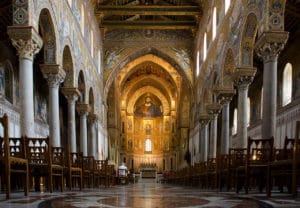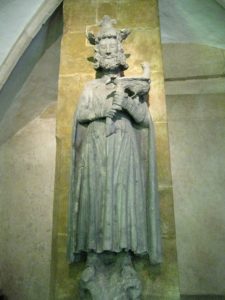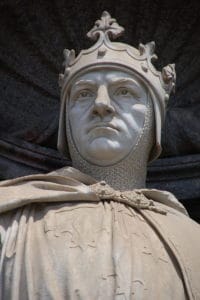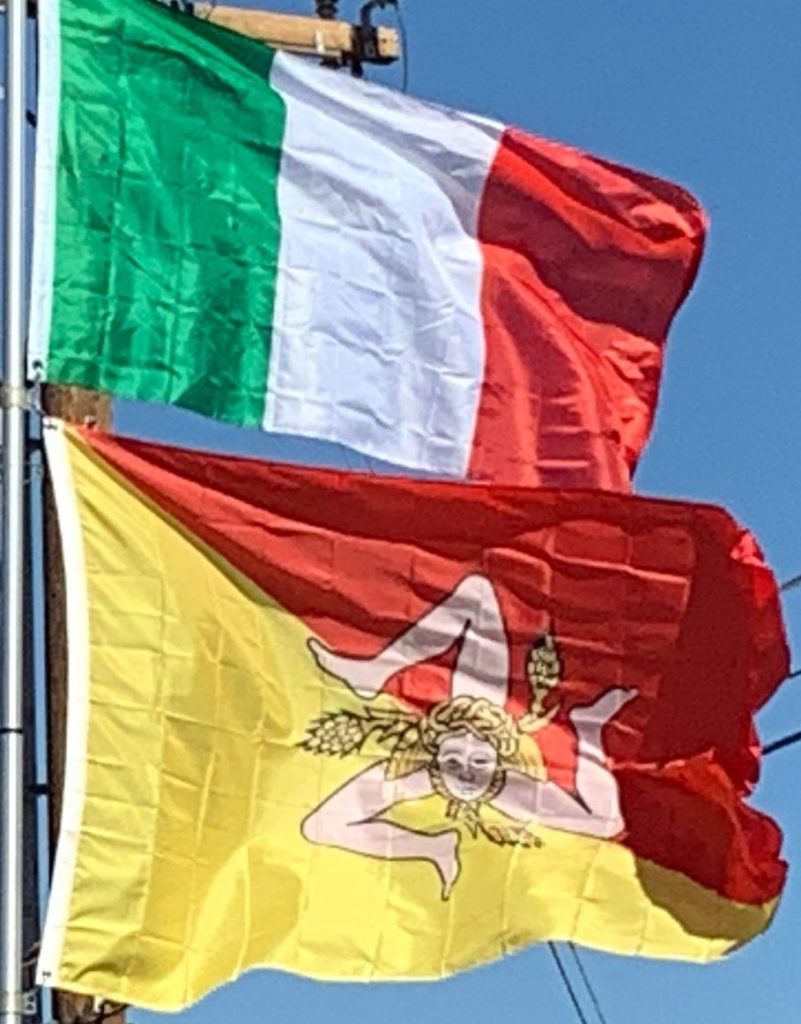However this situation changed as the Normans to secure the island imported immigrants from Normandy, England, Lombardy, Piedmont, Provence and Campania. Linguistically, the island shifted from being one-third Greek- and two-thirds Arabic-speaking at the time of the Norman conquest to becoming fully Latinised. In terms of religion the island became completely Roman Catholic (bearing in mind that until 1054 the Churches owing allegiance to the Pope and the Patriarch of Constantinople belonged to one Church); Sicily before the Norman conquest was under Eastern Orthodox Patriarch.

After Pope Innocent III made him Papal Legate in 1098, Roger I created several Catholic bishoprics while still allowing the construction of 12 Greek-speaking monasteries (the Greek language, monasteries, and 1500 parishes continued to exist until the adherents of the Greek Rite were forced in 1585 to convert to Catholicism or leave; a small pocket of Greek-speakers still live in Messina).
Hohenstaufen Dynasty:
After a century, the Norman Hauteville dynasty died out; the last direct descendant and heir of Roger, Constance, married Emperor Henry VI. This eventually led to the crown of Sicily being passed on to the Hohenstaufen Dynasty, who were Germans from Swabia. The last of the Hohenstaufens, Frederick II, the only son of Constance, was one of the greatest and most cultured men of the Middle Ages.

His mother’s will had asked Pope Innocent III to undertake the guardianship of her son. Frederick was four when at Palermo, he was crowned King of Sicily in 1198. Frederick received no systematic education and was allowed to run free in the streets of Palermo. There he picked up the many languages he heard spoken, such as Arabic and Greek, and learned some of the lore of the Jewish community. At age twelve, he dismissed Innocent’s deputy regent and took over the government; at fifteen he married Constance of Aragon, and began his reclamation of the imperial crown. Subsequently, due to Muslim rebellions, Frederick II destroyed the remaining Muslim presence in Sicily, estimated at 60,000 persons, moving all to the city of Lucera in Apulia between 1221 and 1226.
Conflict between the Hohenstaufen house and the Papacy led, in 1266, to Pope Innocent IV crowning the French prince Charles, count of Anjou and Provence, as the king of both Sicily and Naples.

Sicily Under Aragonese Rule:
Strong opposition to French officialdom due to mistreatment and taxation saw the local peoples of Sicily rise up, leading in 1282 to an insurrection known as the War of the Sicilian Vespers, which eventually saw almost the entire French population on the island killed. During the war, the Sicilians turned to Peter III of Aragon, son-in-law of the last Hohenstaufen king, for support after being rejected by the Pope. Peter gained control of Sicily from the French, who, however, retained control of the Kingdom of Naples. A crusade was launched in August 1283 against Peter III and the Kingdom of Aragon by Pope Martin IV (a pope from Île-de-France), but it failed. The wars continued until the peace of Caltabellotta in 1302, which saw Peter’s son Frederick III recognized as the king of the Isle of Sicily, while Charles II was recognized as the king of Naples by Pope Boniface VIII. Sicily was ruled as an independent kingdom by relatives of the kings of Aragon until 1409 and then as part of the Crown of Aragon. In October 1347, in Messina, Sicily, the Black Death first arrived in Europe.
